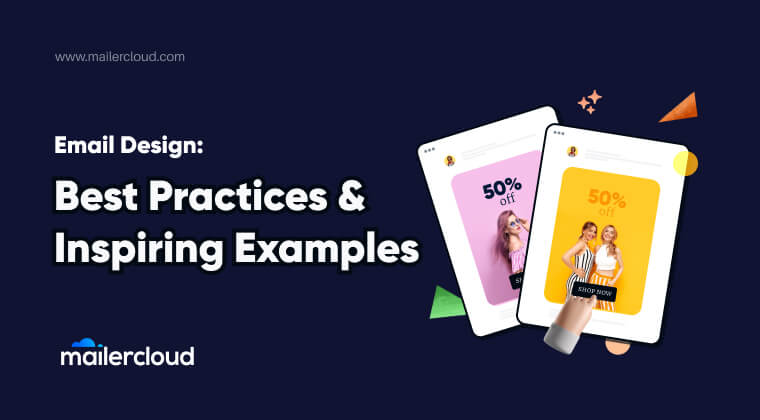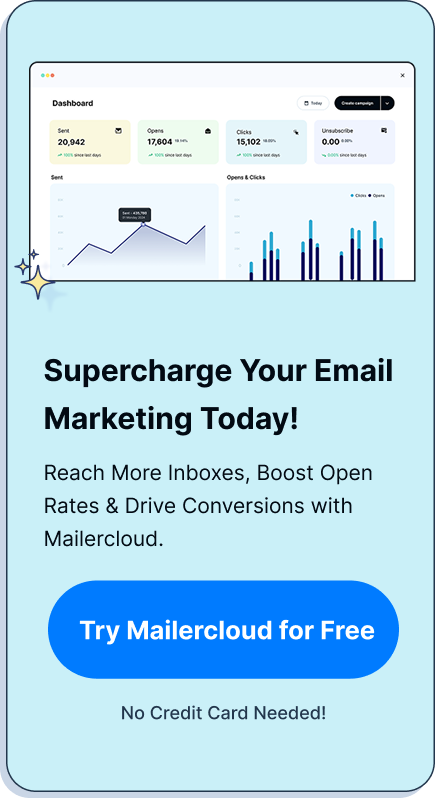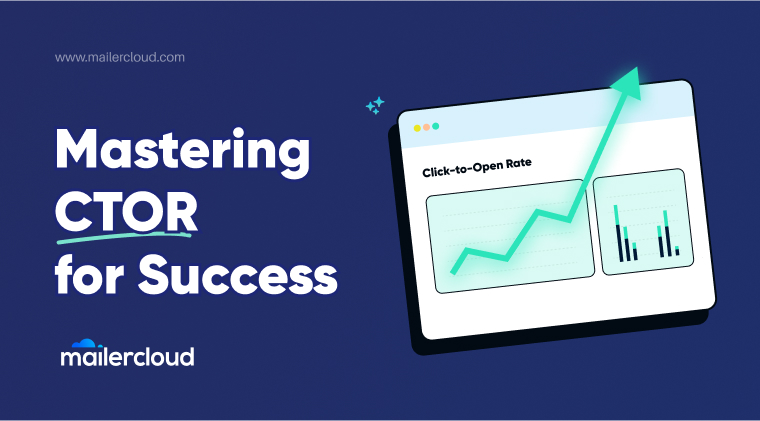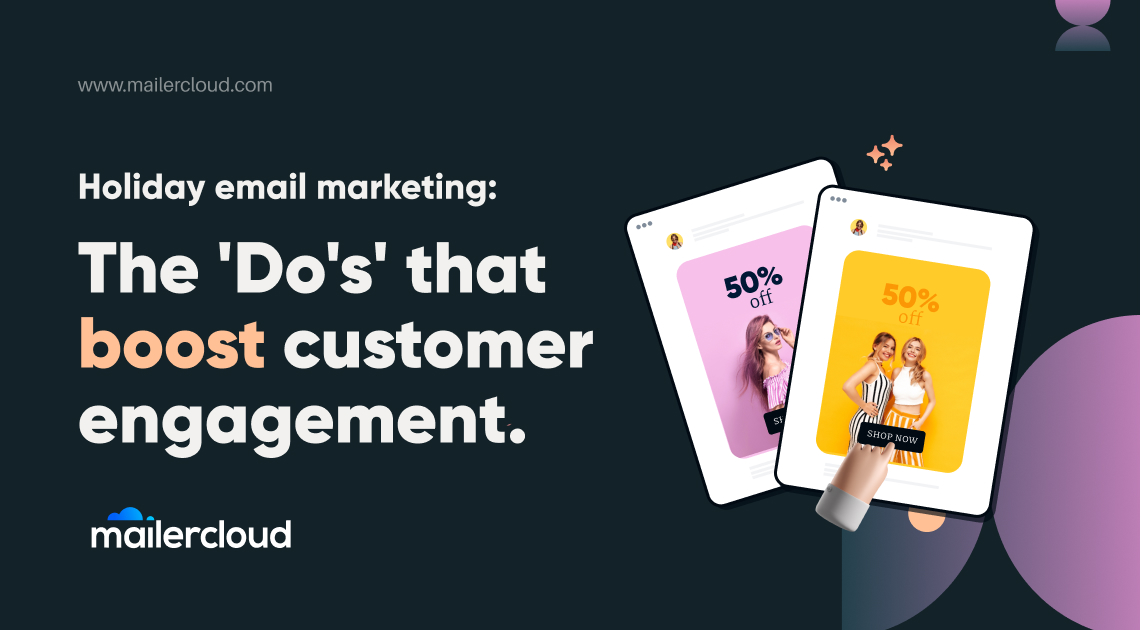In today’s digital world, email marketing continues to be one of the most effective ways to engage with your audience. However, with the increasing number of email campaigns people receive daily, it’s crucial to stand out from the crowd. That’s where email design comes into play. In this ultimate guide, we will explore the best practices for email design and provide you with inspiring examples to help you create visually appealing and impactful emails.
Table of Contents
Introduction to Email Design
Before diving into the best practices and examples, let’s start by understanding the importance of email design. Email design encompasses various elements, including layout, typography, color schemes, images, and interactive features. A well-designed email not only captures attention but also guides readers through the content and prompts them to take action.
Email Design Best Practices
When it comes to email design, certain best practices can significantly enhance the effectiveness of your campaigns. These include optimizing for mobile devices, using adaptable design, utilizing clear and concise content, and incorporating compelling visuals. By following these best practices, you can ensure that your emails are visually appealing and accessible across different devices and email clients.
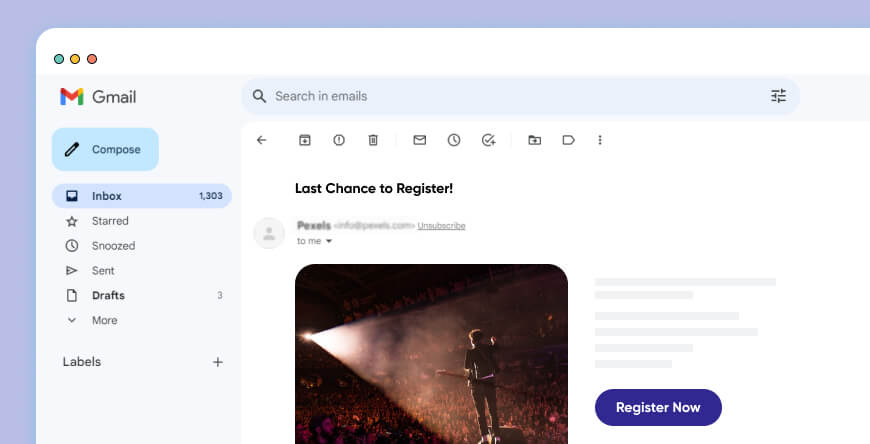
- Keep it Simple: Make sure your email design is clean and uncluttered. Use a simple layout with ample white space to make your content easy to read and navigate.
- Responsive Design: Optimize your email design for different devices and screen sizes. Use responsive email design techniques to ensure that your recipients open an email, it looks good on desktop, mobile, and tablet devices.
- Clear Call-to-Action: Include a clear and prominent call-to-action (CTA) in your email design. Use compelling copy and design elements to encourage recipients to take the desired action.
- Consistent Branding: Maintain consistent branding across your emails. Use your company’s logo, colors, and fonts to reinforce your brand identity and create a cohesive experience for recipients.
- Use Images Wisely: Images can enhance the visual appeal of your emails, but they should be used strategically. Make sure your images are relevant to the type of email, optimized for fast loading, and accompanied by alt text for accessibility.
- Legible Typography: Choose fonts and font sizes that are easy to read. Stick to web-safe fonts to ensure consistent display across different email readers.
- Personalization: Personalize your emails by addressing recipients by their name and segmenting your email list based on their interests or behavior. This can improve engagement and make your emails feel more tailored to the individual recipient.
- A/B Testing: Experiment with different email designs and layouts to determine what resonates best with your audience. Conduct A/B tests to compare different elements such as subject lines, CTA buttons, colors, or layouts.
- Clear Hierarchy: Use a clear hierarchy in your email design to guide recipients’ attention. Use headings, subheadings, and bullet points to break up the content and make it easier to scan.
- Test and Optimize: Before sending out your emails, test them across different email clients, devices, and screen sizes to ensure a consistent experience. Monitor the performance of your emails and use analytics to optimize future campaigns.
Effective Email Design Examples

To inspire your own email design efforts, we have curated a collection of successful email design examples from various industries. These examples showcase innovative layouts, captivating visuals, and strategic use of color and typography. By studying these examples, you can gain insights into what works best in terms of engaging your audience and driving conversions when you design an email.
Here are some effective email design examples that can inspire you when creating your own compelling email newsletter:
- Minimalist Design:
- Use a clean and simple layout with plenty of white space.
- Focus on a single message or call-to-action.
- Incorporate a bold color palette and high-quality images.
- Storytelling Design:
- Tell a story through your email by using a narrative structure.
- Use engaging visuals, such as illustrations or photographs.
- Break up the content into sections with clear headings.
- Interactive Design:
- Include interactive elements like sliders, GIFs, or video previews.
- Use interactive quizzes or surveys to engage readers.
- Make sure the interactive elements are mobile-friendly.
- Grid-based Design:
- Divide the email layout into a grid to create a structured design.
- Use different-sized modules for different content sections.
- Ensure that each module has a clear purpose and visual hierarchy.
- Bold Typography:
- Use large, attention-grabbing typography for headlines.
- Combine different font styles and weights for emphasis.
- Make sure the text is easily readable on different devices.
- Personalization:
- Customize the email design based on the recipient’s preferences or past interactions.
- Include the recipient’s name and relevant personalized content.
- Tailor the design to match the recipient’s demographics or location.
- Design:
- Create an email design that adapts to different screen sizes.
- Ensure that the email is mobile-friendly and displays correctly on various devices.
- Use responsive images and scalable fonts for optimal viewing experience.
- Visual Hierarchy:
- Use email visual cues, such as size, color, and placement, to guide readers’ attention.
- Highlight important content with contrasting colors or larger fonts.
- Organize the email with clear headings, subheadings, and bullet points.
Remember to align your email design with your brand identity and keep it consistent with your website or other marketing materials.
Essential Tools for Designing Emails
Designing visually stunning emails doesn’t have to be a daunting task. With the right tools at your disposal, you can streamline your workflow and create professional-looking emails effortlessly. In this section, we will introduce you to a range of email design tools such as drag-and-drop editors, pre-designed templates, and advanced customization options.
Here are some of the most commonly used tools:
- Email Design Software: Email design software provides a user-friendly interface and a wide range of templates to create professional-looking emails. Some popular options include Mailercloud, Mailchimp, Constant Contact, and Campaign Monitor.
- HTML and CSS Editors: If you prefer to code your emails from scratch, you’ll need an HTML editor like Sublime Text or Adobe Dreamweaver. These editors allow you to write and edit HTML email and CSS code, which is essential for customizing the design and layout of your emails. Tools like Mailercloud also provide drag and drop builders to elevate your email design.
- Image Editing Software: Visual elements play a crucial role in email design. You can use image editing software like Adobe Photoshop or Canva to create and edit images, add text overlays, adjust colors, and optimize file sizes for faster loading.
- Responsive Design Testing Tools: With the majority of emails being opened on mobile devices, it’s essential to ensure that your emails are mobile-friendly and responsive. Tools like Litmus and Email on Acid allow you to test your email designs across different devices and email clients.
- Email Preview Tools: Email preview tools help you see how your email copy will appear in various email clients and web browsers. These tools simulate the rendering of your emails to identify any rendering issues or inconsistencies. Litmus and Email on Acid also offer email preview features along with their testing capabilities.
- Email Analytics Tools: To measure the success of your email campaigns, you’ll need email analytics tools. These tools provide insights into open rates, click-through rates, conversions, and other metrics.
- A/B Testing Tools: A/B testing allows you to compare different versions of your emails to see which one performs better. Tools like Optimizely, VWO, and Mailercloud’s A/B testing feature enable you to test variables like subject lines, call-to-action buttons, layouts, and content variations.
Creating a Compelling Email Newsletter
Email newsletters are a popular way to keep your audience informed and engaged. In this section, we will delve into the key elements of a successful email newsletter, including content strategy, layout design, personalization techniques, and effective call-to-action buttons. Whether you’re new to creating newsletters or looking to revamp your existing ones, this guide will provide you with actionable tips.
- Define your target audience: Understand who your audience is and tailor your content to their preferences and interests. This will help you create relevant and engaging newsletters that resonate with your readers.
- Craft a captivating subject line: The subject line is the first thing your subscribers see, so make it enticing and intriguing to encourage them to open your email. Use clear language, be concise, and consider using personalization techniques to grab their attention.
- Engaging content: Provide valuable and informative content that is relevant to your audience. This can include industry news, tips, tutorials, case studies, product updates, or exclusive offers. Make sure your content is well-written, has visually appealing newsletter design, and easy to digest. Also, avoid fluff in your text and keep it short using a summarizing tool.
- Use visuals strategically: Incorporate eye-catching visuals, such as images, infographics, or videos, to break up the text and make your newsletter visually appealing. However, ensure that the visuals enhance the message rather than distract from it. Also, when planning your visuals, it’s important to consider video production costs, design fees for custom images, and any additional expenses related to licensing or stock imagery, ensuring a balance between quality and budget.
- Personalization techniques: Personalize your newsletters by addressing subscribers by their names and segmenting your email list based on their preferences or behavior. This allows you to deliver more targeted content and create a personalized experience for your readers.
- Consistent branding: Maintain a consistent brand identity in your newsletters by using your logo, brand colors, and fonts. This helps to reinforce your brand image and makes your newsletters easily recognizable.
The Importance of Templates in Email Design
Email templates are an invaluable asset for email marketers as they save time and ensure brand consistency. In this section, we will discuss the benefits of using templates and provide tips for customizing them to align with your brand identity.
Here are some key reasons why templates are important:
- Branding: Templates allow you to incorporate your brand elements, such as logo, colors, and fonts, into your email content and design. This ensures that your marketing emails maintain a consistent look and feel, reinforcing your brand identity and increasing brand recognition.
- Time-saving: Using templates saves time by providing pre-designed layouts and structures. Instead of starting from scratch for every email, you can simply fill in the content and customize the template to suit your needs. This streamlines the email creation process and allows you to send out emails more efficiently.
- Consistency: Templates ensure consistency in the design and formatting of your emails. This consistency helps build trust and familiarity with your audience, making it easier for them to recognize and engage with your content. Consistent branding also reinforces your professionalism and attention to detail.
- Mobile optimization: With the increasing use of mobile devices for email consumption, templates enable you to create responsive designs that adapt to different screen sizes. This ensures that your emails are legible and visually appealing on both desktop and mobile devices, enhancing the user experience. If you’re interested in creating stunning email templates that are optimized for responsive design, you might want to consider reaching out to a webflow agency. They can help you create custom email templates that look great on any device and reflect your unique brand identity, helping you make a positive and lasting impression on your customers.
- Personalization: Templates can be customized to include personalization elements like recipient names or dynamic content based on user preferences or behavior. This level of personalization can improve engagement and make your emails more relevant to individual recipients. For those who want to save time but deliver high-quality visual content, it’s beneficial to leverage platforms that allow you to download hundreds of templates, ensuring your campaigns stay fresh and engaging without the need for extensive design resources.
Leveraging an Email Builder for Design Efficiency
If you’re looking to streamline your email design process and improve efficiency, an email builder can be a game-changer. This section will introduce you to popular email builder tools like Mailercloud that offer intuitive interfaces, drag-and-drop functionality, and seamless integration with other marketing platforms.
- Email builders often come with a wide range of pre-designed templates that you can choose from. These templates are professionally designed and optimized for different purposes, saving you time and effort in creating emails from scratch.
- You can easily customize your email layout by simply dragging and dropping elements such as images, text blocks, buttons, and social media icons. This intuitive interface makes it easy for anyone, regardless of their coding skills, to design visually appealing emails.
- It usually offer responsive design options, ensuring that your emails look great on different devices and screen sizes. This eliminates the need for manual coding adjustments to make your emails mobile-friendly.
- Email builders often integrate seamlessly with popular marketing platforms like customer relationship management (CRM) systems, marketing automation tools, and email marketing software.
Email Design Trends to Watch Out For
Staying updated with the latest design trends can give your emails a modern edge and help them stand out among competitors. In this final section, we will explore emerging email design trends, such as interactive elements, bold typography, minimalist layouts, dark mode compatibility, and personalized visuals. These examples also reflect many current creative trends that are shaping modern digital communication. Stay ahead of the curve by incorporating these trends into your email designs.
- Minimalist Design: Minimalism is a popular trend in many design fields, including email design. Clean and simple email layouts with plenty of white space can create a sense of elegance and focus on the key message.
- Dark Mode Compatibility: With the increasing popularity of dark mode in various apps and platforms, designing emails that are compatible with dark mode is essential. Using colors, images, and typography that work well in both light and dark modes ensures a seamless experience for recipients.
- Bold Typography: Typography plays a crucial role in email design. Using bold and eye-catching fonts can help emphasize key messages and create a visually appealing design. Experimenting with different font styles and sizes can add personality to your emails.
- Interactive Elements: Adding interactive elements like sliders, accordions, or buttons can enhance user engagement and make your emails more interactive. These elements can be used to showcase product images, provide additional information, or create interactive quizzes or surveys using the AMP feature.
- Personalization: Personalized emails are more likely to catch the recipient’s attention. Incorporate dynamic content and personalization techniques like using the recipient’s name, location-based offers, or tailored product recommendations to create a personalized experience.
- Mobile-Friendly Design: With the majority of emails being opened on mobile devices, it’s crucial to optimize your email designs for mobile viewing. Use responsive design techniques to ensure that your emails adapt to different screen sizes and provide a seamless experience across devices.
- Animated GIFs: Adding animated GIFs can bring life to your emails and capture the recipient’s attention. Use subtle animations to highlight important information or showcase products. However, be cautious not to overload your emails with excessive animations that may distract or annoy recipients.
- Social Media Integration: Integrating social media buttons or sharing options in your emails can encourage recipients to engage with your brand on social platforms. This can help extend the reach of your email campaigns and drive more traffic to your social media profiles.
Key Takeaways:
In conclusion, mastering the art of email design is crucial for maximizing the impact of your email marketing campaigns. By following the best practices outlined in this ultimate guide and drawing inspiration from real-life examples, you can create visually stunning emails that captivate your audience and drive desired actions. Remember to experiment with different design elements and continuously analyze the performance of your emails to refine your approach over time.
- Optimize your emails for mobile devices and ensure responsiveness.
- Use clear and concise content that prompts action.
- Incorporate compelling visuals and interactive elements.
- Leverage email design tools for efficiency.
- Pay attention to copywriting techniques.
- Stay updated with the latest design trends.
Now that you’re equipped with the ultimate guide to email design best practices and examples, it’s time to take your email marketing to the next level!
Lina is a content writer with a passion for reading, writing, and cooking. She aims to explore the world of words and flavors. With a deep love for literature and a knack for creating mouthwatering recipes, she strive to engage and inspire others through her work.





























